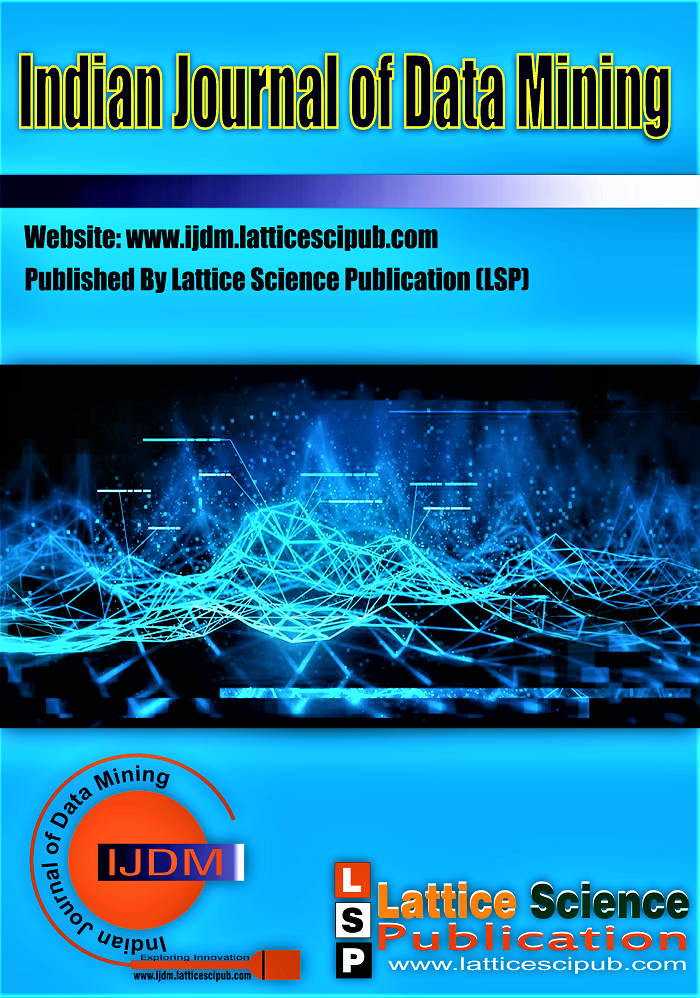Fake News Detection
Main Article Content
Abstract
The spread of false information on the internet has become a major social issue, casting doubt on the veracity of information shared on these platforms. This study uses cutting-edge methods from machine learning (ML) and natural language processing (NLP) to present a complete framework for the detection of fake news. The purpose of this paper is to develop a model for detecting bogus news. A model is selected by using supervised learning techniques. In addition, we categorize news stories as real or fraudulent using the Naïve Bayes, Logistic Regression, and Random Forest algorithms. Our methodology offers an approach to false news identification that is more robust by taking into account the credibility of the news sources in addition to the content of the news. Using labeled datasets of fictitious and authentic news stories, we train our algorithms. A few methodologies were compared to achieve varying degrees of accuracy. When compared to the other two models, Random Forest is thought to have produced the best results in terms of accuracy. We assess our framework’s effectiveness using real-world news articles and benchmark datasets, showcasing its versatility in correctly recognizing false information in a variety of settings and domains. We demonstrate the advantages of our method in terms of detection accuracy, scalability, and computational efficiency by comprehensive experimentation and comparative analysis. All things considered, our suggested framework is a major step forward in the fight against the dissemination of false information on the internet and provides a workable way to lessen the negative effects of fake news on people, communities, and society at large.
Downloads
Article Details

This work is licensed under a Creative Commons Attribution-NonCommercial-NoDerivatives 4.0 International License.
How to Cite
References
Reham Jehad1 and Suhad A. Yousif2,*. Fake News Classification Using Random Forest and Decision Tree (J48), Al-Nahrain Journal of Science (ANJS), Vol.23 (4), December, 2020, pp. 49-55. DOI: 10.22401/ANJS.23.4.09. https://doi.org/10.22401/ANJS.23.4.09
N.Shivani1, Nousheen Sultana2, P Bhavani3, P. Shravani4 . Fake News Detection Using Logistic Regression. International Journal of Advances in Engineering and Management (IJAEM) Volume 5, Issue 1 Jan. 2023, pp: 1151-1154 www.ijaem.net.
Sarra Senhadji1, Rania Azad San Ahmed2,3 . Fake news detection using naïve Bayes and long short term memory algorithms. IAES International Journal of Artificial Intelligence (IJ-AI), Vol. 11, No. 2, June 2022, pp. 748~754, ISSN: 2252-8938, DOI: 10.11591/ijai.v11.i2.pp748-754. https://doi.org/10.11591/ijai.v11.i2.pp746-752
R.S.Karthika1, Dr.M.Rajeswari*, FAKE NEWS DETECTION USING MACHINE LEARNING USING SVM ALGORITHM, 2022 JETIR June 2022, Volume 9, Issue 6, www.jetir.org (ISSN-2349-5162).
Z Khanam1, B N Alwasel1, H Sirafi1 and M Rashid2, Fake News Detection Using Machine Learning Approaches, IOP Conf. Series: Materials Science and Engineering 1099 (2021) 012040, IOP Publishing, doi:10.1088/1757-899X/1099/1/012040.https://www.kaggle.com/code/therealsampat/fake-news-detection
Lakshmanarao, A., Swathi, Y., & Kiran, Dr. T. S. R. (2019). An Effecient Fake News Detection System Using Machine Learning. In International Journal of Innovative Technology and Exploring Engineering (Vol. 8, Issue 10, pp. 3125–3129). https://doi.org/10.35940/ijitee.j9453.0881019
R, V., & S, A. K. (2020). Analysis on Fake News Detection Methodologies. In International Journal of Recent Technology and Engineering (IJRTE) (Vol. 9, Issue 1, pp. 1572–1575). https://doi.org/10.35940/ijrte.a2448.059120
Srivastava, A., & Saxena, Dr. U. K. (2023). Digital Media and Media literacy. An Analysis of the Contribution and Effect of social media in Media Literacy. In Indian Journal of Mass Communication and Journalism (Vol. 3, Issue 1, pp. 17–22). https://doi.org/10.54105/ijmcj.a1051.093123
Sharma, D., & Singhal, S. (2019). Detection of FAKE NEWS on SOCIAL MEDIA using CLASSIFICATION Data Mining Techniques. In International Journal of Engineering and Advanced Technology (Vol. 9, Issue 1, pp. 3132–3138). https://doi.org/10.35940/ijeat.a1637.109119
Nandhini, MS. S., Sofiyan, M. A., Kumar, S., & Afridi, A. (2019). Skin Cancer Classification using Random Forest. In International Journal of Management and Humanities (Vol. 4, Issue 3, pp. 39–42). https://doi.org/10.35940/ijmh.c0434.114319





